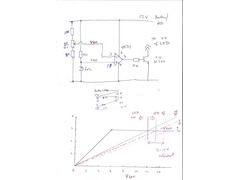nitram38
|
 posted on 17/3/08 at 09:25 PM posted on 17/3/08 at 09:25 PM |

|
|
R1 warning light question
I have bought a Car Bright6 instead of a Bike version as my N indicator is via a datatool display.
I would like to wire my battery warning lamp so that I can be sure that there is a charge.
I know alternators have a terminal that swaps from 0v to 12v when running but I don't think that the R1 will have this.
Are there any electronics geni out there who can provide me with a simple voltage switch that will switch off the indicator lamp when the battery is
charging?
I could simply blank the battery symbol out or buy another bright6, but I would prefer only one neutral indication and I hate stuff that isn't
working! 

|
|
|
|
|
Chippy
|
| posted on 17/3/08 at 10:54 PM |

|
|
I have always understood that you just supply, from the ignition switch, 12v to the alternator through a low wattage lamp, which give the alternator
an "exciter" currant, as the alternator starts to charge the charge, (some of it) returns through that line effectively stopping the lamp
from lighting. May be totaly wrong but that is how the thing works, as far as I am aware. HTH Ray
To make a car go faster, just add lightness. Colin Chapman - OR - fit a bigger engine. Chippy
|
|
|
nitram38
|
| posted on 18/3/08 at 03:52 AM |

|
|
The R1 has a magneto and I am not sure if wiring it this way will damage it.
I would much prefer some sort of voltage sensing that switches off the light if it reaches say 14v?

|
|
|
02GF74
|
| posted on 18/3/08 at 08:55 AM |

|
|
firstly a google reveals you are correct about R1 magneto - I though these were abandoned in the 1930s!!  (maybe same term used for different
thing?!) (maybe same term used for different
thing?!)
wot you want is a comparator circuit using something like LM311 (50p).
a couple of resistors (maybe a preset) and job done. this device can supply up to 50 mA which is enough for a LED (typically 20 mA).
|
|
|
nitram38
|
| posted on 18/3/08 at 06:23 PM |

|
|
Cheers 02GF74
You have U2U !

|
|
|
02GF74
|
| posted on 20/3/08 at 08:34 AM |

|
|
this is what I have come up with.
there is a 6 V (actaully 6.2 V) reference that is compared against battery voltage/2. Once battery voltage goes above that, the transistor is turned
off and so no current in LED hence LED is off.
there is a 2 K trim pot that allows the threshold to be set so you can select "LED off voltage" in range of 12.4 - 15 V.
If 12.4 V is a bit too high, then changing resistor values would fix that.
The computor generated graph shows the voltage supplied to the comparator, when the black line and solid/dotted red lines cross, that is the point at
which the LED changes state.
 
smart6 alternator lamp circuit
[Edited on 20/3/08 by 02GF74]
|
|
|













